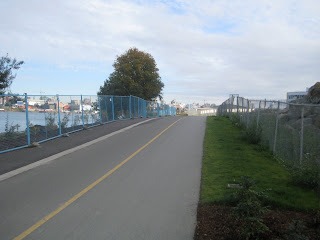
Population - 568,380
Population Density - 4,199.17/sq mi
Metropolitan Population - 2,159,720
Portland is the bike mecca in the United States. With about 5% of trips taken by bike (which is pretty low still) it has become the standard of bike planning. While I have been back to Portland in 2005 to run the marathon, it still continues to be my favorite city in the NW. I know you are thinking of course it is, but not just because of the bike infrastructure.

I find that Portland has done a good job balancing development, multi-mode public transit, walkable neighborhoods, and Washington and Forest Park both within the city limits. On our two days in Portland we basically walked everywhere and never really needed to jump on the streetcar, light rail, or bus.
Although it is nothing fancy I really do enjoy the waterfront in downtown Portland. It is basically a simple promenade with a nice walkway and benches. It is a draw for runners, joggers, and bikers as it becomes a pathway onto and off of the bridges. I always enjoy the ways Portland reclaims its street space.

As with all cities, Portland is far from perfect. While they fought against a highway along the waterfront, the I-405 and I-5 cut through downtown Portland and East Portland respectively. Even though this is a minor complaint, when crossing over the 405 by foot Portland has only built a sidewalk on one side, which forces you to cross the street to cross.
I was not so impressed with the downtown bike infrastructure. While during rush hour you see tons of cyclists coming off of the bridges, at some points they are left on their own with no clear signage or bike lane. While this might not be a huge problem, having logical connections always makes riding a lot easier.
Or maybe I liked Portland best on this trip because we had two glorious days of sunshine.













































